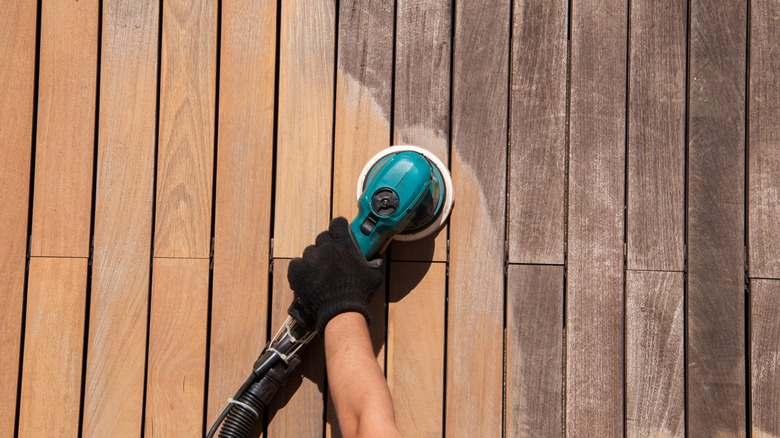Pressure Washing Vs. Sanding: Which Is Better For Your Deck?
When deciding between pressure washing and sanding for your deck, consider the specific needs and condition of your wood. Both pressure washing and sanding have their advantages and potential drawbacks. Pressure washing offers a quick and efficient way to remove surface dirt and grime, making it a suitable option for initial cleaning. However, it requires careful handling to prevent damage, especially on older or untreated decks. Sanding, while more labor-intensive, provides a deeper clean and smoother finish, making it ideal for preparing the deck for staining or sealing.
Routine maintenance by a professional is often the best approach, Peter Hansen, Co-Owner and Managing Member for Sparrow Estate Management, told Outdoor Guide, as they can assess the condition of your deck and recommend the most appropriate cleaning and treatment methods. "Most professionals will maintain a recommended application cycle, once every 90 days, semi-annually or annually depending on your wood type, sun exposure, and other factors," according to Hansen.
Regular maintenance not only keeps your deck looking its best but also protects it from mold, dirt buildup, and other potential damage. But what are the crucial differences between sanding and pressure washing? And which one, if you are more of a DIY person, should you go for?
Pressure washing: A quick but risky solution
Pressure washing is a popular method for cleaning wood decks due to its efficiency and speed. It can rapidly remove dirt, grime, and mold from the surface, making it a go-to choice for many homeowners. This technique is particularly useful for decks that have not been cleaned in a while and require a significant amount of buildup to be removed.
However, while pressure washing can be a powerful cleaning tool, it should ideally be part of a larger deck maintenance routine that includes sanding, staining, and sealing. Many professional painters include pressure washing as the initial step in their deck preparation process, Hansen told Outdoor Guide. This ensures that the deck is thoroughly cleaned before any further treatments are applied, promoting better adherence of stains and sealants.
Despite its benefits, pressure washing must be approached with caution. "Be sure to thoroughly inspect your deck, take into consideration its age and noticeable wear [or] damage," Hansen said. "You will want to be gentle with the pressure washing application and ensure that you do not make any harsh impressions or striping by applying the lance too close to the surface."
Still, by using pressure washing judiciously and as part of a comprehensive maintenance plan, which may include ensuring your deck is properly varnished at correct intervals, you can effectively clean your deck without causing undue harm.
Sanding: A thorough and gentle approach
Sanding is another effective method for cleaning and maintaining a wood deck, offering a more controlled and thorough approach than pressure washing. This technique is particularly beneficial for removing mold, dirt, and other stubborn debris that may not be fully addressed by pressure washing alone. Sanding can also smooth out the surface of the wood, removing splinters and minor imperfections, which can enhance the overall appearance and safety of the deck. For those looking to refinish their deck, sanding provides a clean, smooth surface that is ideal for the application of stains and sealants.
Unlike pressure washing, sanding does not carry the risk of water damage. Pressure washing can force water deep into the wood, which can cause swelling and warping, particularly if the deck is untreated or the wood is highly porous. Sanding, on the other hand, removes surface contaminants without introducing moisture, making it a safer option for older or more delicate decks. While sanding can be more labor-intensive and time-consuming, the results are often more consistent and long-lasting. After you sand your deck down it's a good idea to then seal and stain the clean smooth surface. You can try this lazy deck painting hack to to make your varnishing experience less laborious.


